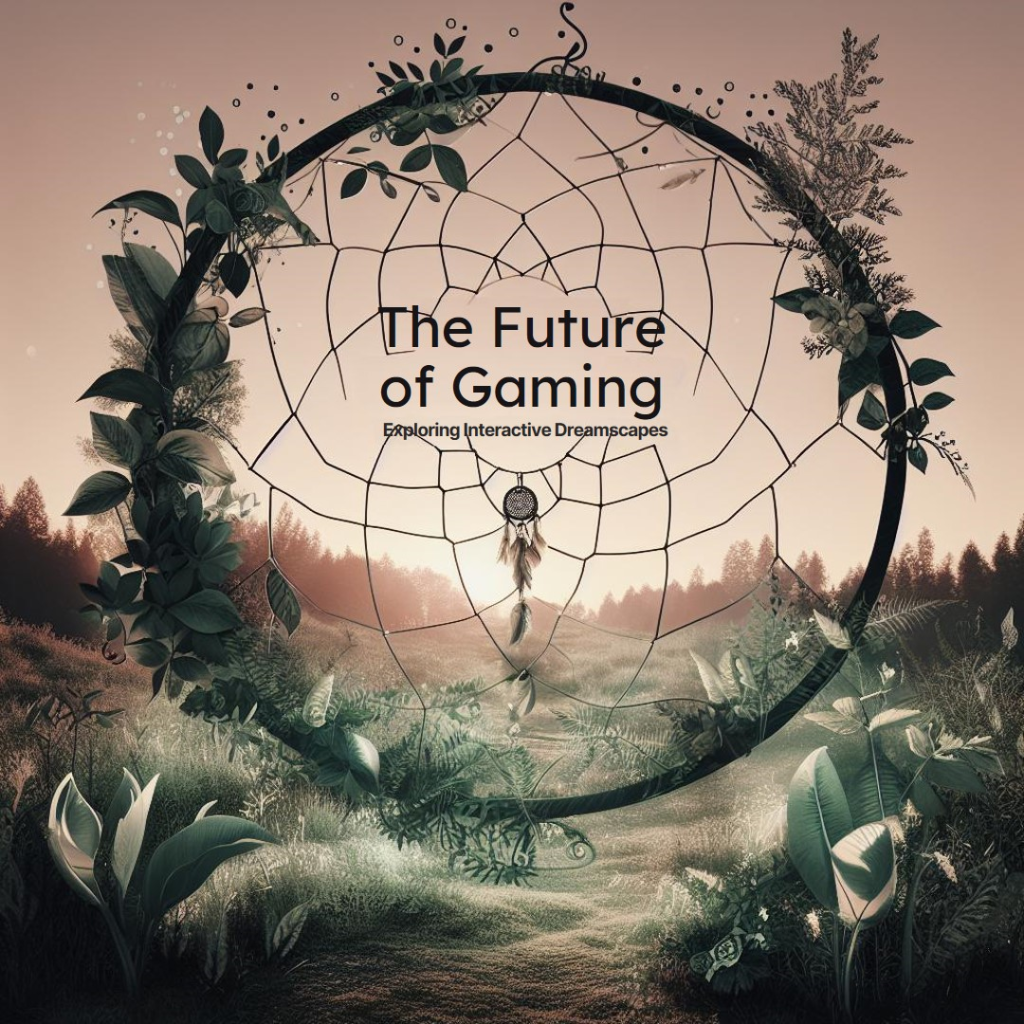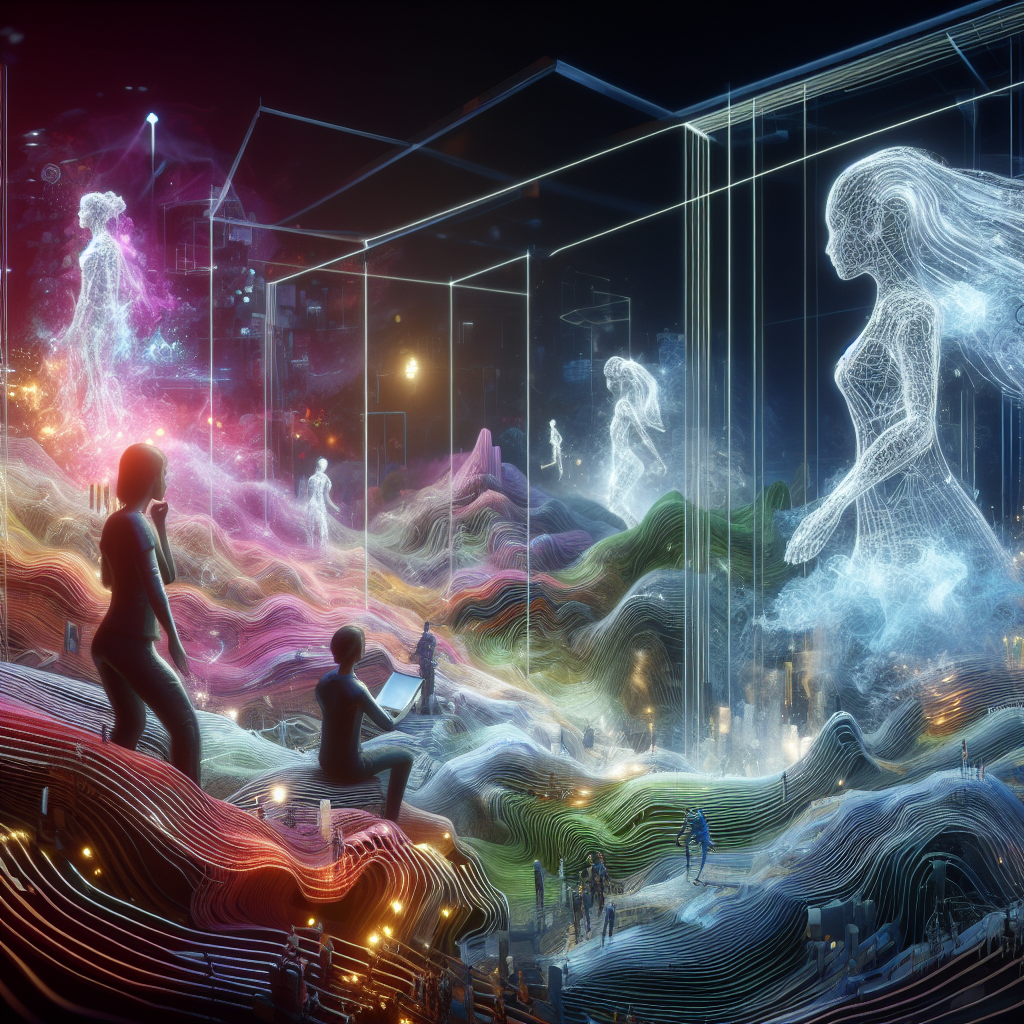As the gaming industry continues to innovate at a breathtaking pace, it welcomes a groundbreaking concept: Virtual Dreamworlds. This pioneering approach intertwines the spheres of immersive virtual reality, sophisticated AI, and dynamic, player-centric narratives, promising a level of personalization in gaming that was once only imagined
Unraveling the Essence of Virtual Dreamworlds
Virtual Dreamworlds stand as a testament to unbridled creativity in gaming. They exist beyond the limitations of contemporary technology and conventional storytelling, offering an avant-garde blend of fantastical artistry, immersive narratives, and speculative gameplay elements. These conceptual games push the boundaries of what we perceive as gaming reality.
Frontiers in Imaginary Game Design
Designing Boundless Cosmic Realities
These dreamworlds allow designers to craft realities unfettered by the known universe. Consider “Stellar Architects,” a conceptual game where players shape entire star systems, defying not just gravity but reality itself.
Pioneering Psyche-Driven Character Evolution
In this realm, characters are sculpted not just by choices but by the depths of the player’s psyche. “Psyche Weaver,” for instance, could be a game where character development is intrinsically linked to the player’s cognitive and emotional landscape.
Envisioning Advanced Gameplay Mechanics
Transformative Game Interaction and Control
In the theoretical world of “Quantum Realities,” players might manipulate the very fabric of the game universe through neural interface technology, redefining the concept of game interaction.
Pioneering AI Roles in Ethereal Universes
AI becomes the cornerstone of these ethereal universes. In the imagined title “Sentient Dreams,” AI not only shapes the game world in response to player actions but also to their subconscious thought patterns.

The Artistry of Crafting Dreamworlds
Evolving Visual Artscapes
In these realms, the visual design evolves to mirror the emotional state of the player. For instance, “Visionary Realms” might employ real-time emotional analysis to transform its visuals, adapting everything from color palettes to environmental aesthetics.
Adaptive Soundscapes and the Subconscious
Similarly, “Echoes of the Ether,” another conceptual title, could use AI to fine-tune its audio design, syncing sound effects and music with the player’s inner emotional world.
The New Frontier of Ethics and Creativity
As we venture into these virtual dreamworlds, we are also navigating a new ethical landscape, one that challenges our notions of privacy and psychological impact. These games invite us to ponder the balance between immersion and reality, between digital fantasy and mental wellness.
Conclusion: A Dawn of New Realities in Gaming
Virtual Dreamworlds represent not just the future of gaming but the future of interactive storytelling and experiential art. They hold the promise of experiences limited only by imagination, marking a new dawn in the realm of digital entertainment.
List: Imaginary Titles in Virtual Dreamworlds and Their Features
- “Stellar Architects” – Create and manage your own star systems.
- “Psyche Weaver” – Character development based on psychological dynamics.
- “Quantum Realities” – Bend the game universe through neural controls.
- “Sentient Dreams” – AI adapts to subconscious player interactions.
- “Visionary Realms” – Dynamic visual environments based on emotions.
- “Echoes of the Ether” – AI-driven adaptive soundscapes.
- “DreamNet” – A platform for sharing and collaborating on dreamworlds.
- “MindMeld Adventure” – Explore realms using advanced neural interface.
- “AI Odyssey” – Experience AI-crafted storylines and worlds.
- “Ethereal Saga” – An epic journey through player-created dreamscapes.

FAQs About Virtual Dreamworlds in Gaming
- What defines Virtual Dreamworlds in gaming?
- Virtual Dreamworlds in gaming are conceptual realms where gameplay, narrative, and visuals are dynamically shaped by AI in response to the player’s interactions and subconscious thoughts.
- Can players share these dreamworlds with others?
- Conceptually, players could share and even co-create dreamworlds, using platforms like “DreamNet” to collaborate on fantastical experiences.
- What technology drives these virtual dreamworlds?
- Advanced neural interfaces, AI, and emotional analysis technology are the key drivers behind the creation of responsive and immersive virtual dreamworlds.
- How do Virtual Dreamworlds differ from traditional gaming?
- Unlike traditional gaming, Virtual Dreamworlds offer a deeply personalized experience, tailored to the player’s psychological profile and emotional state, transcending conventional gameplay.
- What future potential do Virtual Dreamworlds hold?
- Virtual Dreamworlds hold immense potential for revolutionizing storytelling, player engagement, and creating new forms of interactive art, paving the way for future technological and creative innovations in gaming.